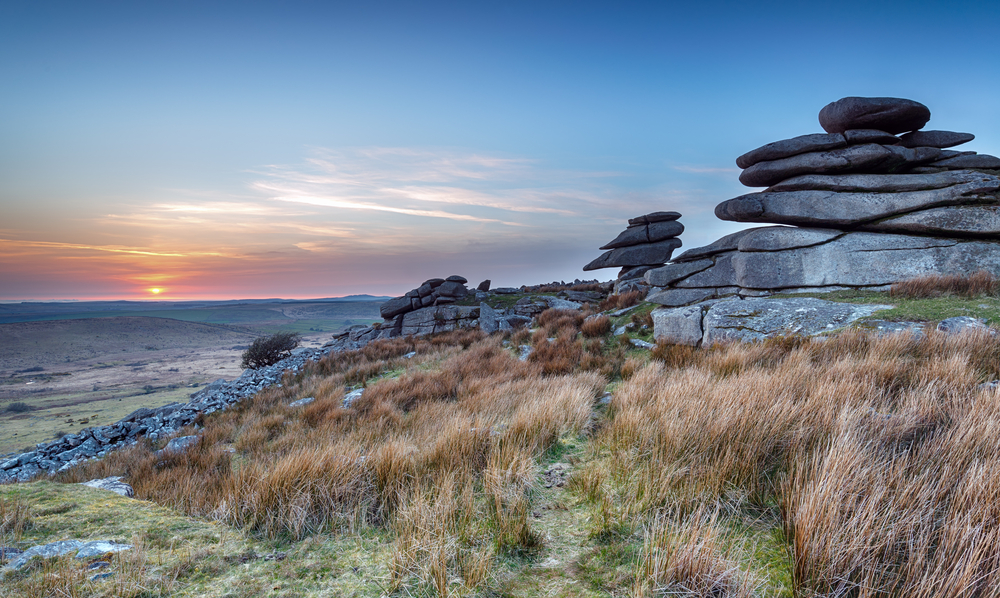For those who long to escape the bustle of modern life the uplands of Bodmin Moor, the most untouched and wild region of Cornwall, are the perfect place get away. And amazingly, given its stunning natural beauty, beyond sites such as Rough Tor, the Cheesewring and the Hurlers at Minions, much of the moor remains firmly off the tourist trail.
Here is our little guide to some of the lesser known treasures hiding on Bodmin Moor.
The Trippet Stones
Bodmin Moor is bursting with prehistoric remains, hut circles, barrows, cairns and stone circles litter the landscape. The Trippet Stones is actually one of the easiest circles to reach but remains relatively unknown. This Bronze Age monument was constructed some 4000 years ago and consists of a circle of twelve stones, though at one time it is estimated that there were as many as twenty-six.
Huddled beneath Carbilly tor and Hawks tor, where you can also find the striking Stripple Stones circle, this monument has a wonderful, peaceful atmosphere, it is a great place for a picnic and to let your imagination drift.
The Darley Oak
This impressive oak is the oldest tree in Cornwall and has stood in the tiny hamlet of Upton Cross for an estimated 1000 years! With a girth of 11.6m (38ft) the Darley Oak was recognised in 2002 as one of the 50 greatest trees in Britain by the Tree Council.
Just imagine what this magnificent oak has witnessed since it grew from an acorn all those centuries ago!
Jubilee Rock
A short walk from the picturesque village of Blisland is a rather unusual and unique monument. The Jubilee Rock was carved in 1810 by John Rogers, a soldier who grew up on a farm nearby, to celebrate the jubilee of King George III.
The huge granite boulder is covered in carvings, from the figure of Britannia to crests, masonic symbols and flags that would once have been brightly painted too. It is a strange sight, well worth the adventure of finding it.
Logan Rock, Louden Hill
Numerous ancient monuments surround Louden Hill, there are for example three stone circles nearby, but the attraction that draws people here is a purely natural phenomenon.
Logan rocks were once important sites for the Cornish, the most famous was the one at Treen, but others can be found across Cornwall if you know where to look. These huge stones, which can weigh several tons, have been weathered so that they are on a pivot and can be moved easily by human hand. Louden hill has one such stone that has the added advantage of being surrounded by a truly stunning vista!
St Neot Holy Well
The moorland village of St Neot is a pretty special place, isolated and picturesque, its parish church boasts some of the most beautiful stained glass in the whole of the West Country. And not far from the village, down a quiet track, you can also find the delightful St Neot holy well.
Originally dating from the 9th century, when the Saxon monk St Neot was living here, the remarkable granite well house was restored in 1852. It was said that the well was once home to three holy fishes that God provided for the monk to eat. No matter how many fish he caught there was always the same number remaining in the pool . . .
